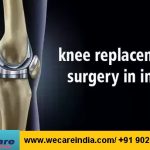OSLER WEBER RENDU DISEASE SURGERY
Osler-Weber-Rendu disease, also referred to as hereditary hemorrhagic telangiectasia, is an autosomal dominant disorder characterized with telangiectasis, aneurysms, and arteriovenous malformations. The reported prevalence of this disorder is 1-2 cases per 100,000 population. The patient’s skin, mucosa, and blood vessels of the lung, liver, and central nervous system can be affected. Although hepatic involvement used to be confirmed by biopsy, necropsy, or angiography, newer, less invasive techniques such as sonography, CT, and MR imaging have been used to detect hepatic vascular malformations even in the clinically silent stage of the disease .
More recently, three-dimensional (3D) sonography has provided a sensitive and noninvasive method for examining the hepatic vasculature for disease and for confirming hepatic vascular malformations. We describe a patient with Osler-Weber-Rendu disease in whom 3D sonograms reconstructed from power Doppler sonography were useful in establishing the diagnosis.
Osler-Rendu-Weber disease has multiple manifestations. Increased hepatic blood flow through the arteriovenous or portovenous fistulas in the liver may cause hepatomegaly, with the patient presenting with right upper quadrant pain. Left-to-right shunting through the hepatic vascular fistulas may lead to high-output cardiac failure. Rarely, hepatic arterioportal shunting may lead to portal hypertension, with the patient presenting with gastrointestinal variceal rupture or hepatic encephalopathy.
Symptoms Surgery in india
- Frequent nosebleeds in children
- GI bleeding, including loss of blood in the stool or dark black stools
- Port wine stain
- Seizures or unexplained, small strokes (from bleeding into the brain)
- Shortness of breath
- Telangiectases on the tongue, lips, nasal mucosa, face, ears, fingertips, nails, whites of the eyes, and skin (they may bleed easily)
Treatment in india
Treatments include : –
- Surgery to treat bleeding in some areas
- Electrocautery or laser surgery to treat frequent or heavy nosebleeds
- Endovascular embolization to treat abnormal blood vessels in the brain and other parts of the body.
Some patients respond to estrogen therapy, which can reduce bleeding episodes. Avoid taking blood-thinning medications.
Some patients may need to take antibiotics before having dental work or surgery. Ask your doctor what precautions you should take.
Risk
OWRD is most common in white individuals but has been observed in blacks and individuals of Asian and Arabic descent. Males and females are equally affected. The syndrome most often presents itself between the ages of 30 and 40, but may be clinically silent. Recurrent epistaxis (nosebleed), which often develops prior to the 20s, is the most common manifestation (Silver).
Some cases are so mild that they may never be diagnosed; about 20% of cases occur in individuals with no known family history. Symptoms of the disorder often first appear in childhood as recurrent nosebleeds due to ruptures in the mucous membranes that result in bleeding.














